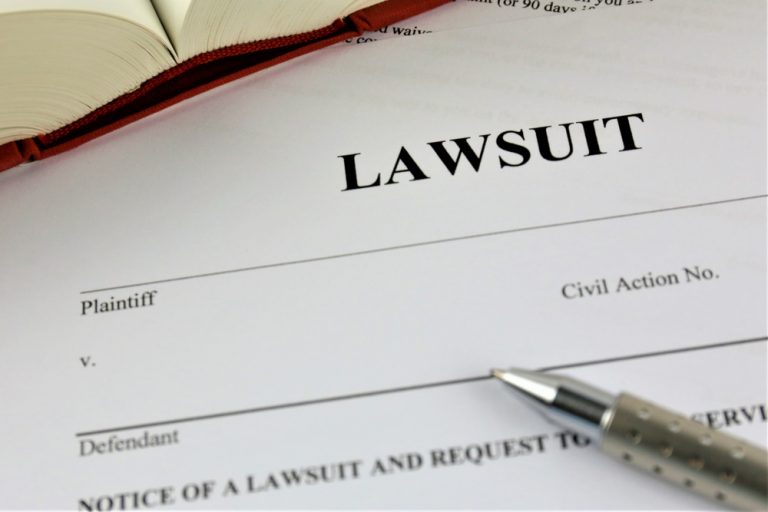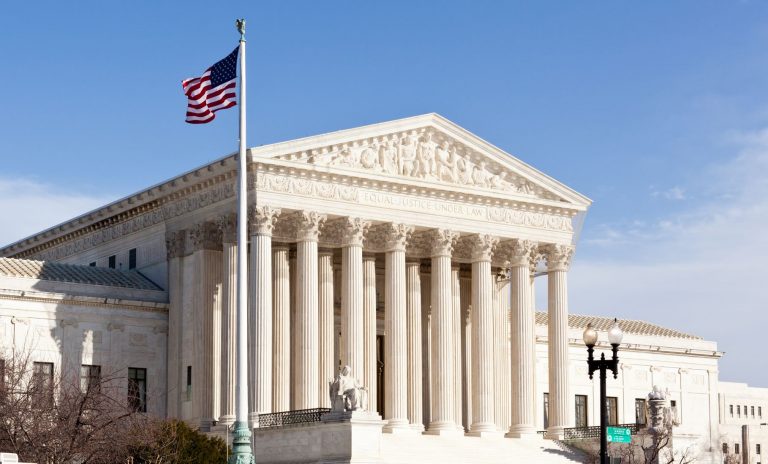Autonomous Safety Technologies: Lowering the Bar for the Alert and Safe Driver
Autonomous Safety Technologies: Lowering the Bar for the Alert and Safe Driver
In 2013, The National Highway Traffic Safety Administration (NHTSA) released a ‘Preliminary Statement of Policy Concerning Automated Vehicles’ (the “Policy”). The Policy includes a classifications system partitioning vehicle automation into five levels, ranging from level 0 (“no automation”) to level 4 (“full self-driving automation”). Although most liability debates among legal scholars focus on the horizon of level 4 – “full self-driving” vehicles and who is liable when those vehicles are involved in an accident; the vehicles in levels 1 and 2 present the most immediate concerns from a product liability perspective. For jurisdictions with pure comparative fault standards (such as Arizona, Florida, Kentucky, Louisiana, Mississippi, and New Mexico), vehicles with level 1 and 2 automation could serve as the catalyst for a switch from pure comparative fault to either a standard of modified comparative fault or contributory fault.
Many commercials by automobile manufacturers now highlight the autonomous safety features of their vehicles. These commercials usually involve a driver in a new vehicle who is distracted either by a passenger, an outside event, or simply is not paying attention to the road. Inevitably, an unexpected hazard presents itself and the driver, who is not paying attention, does not have enough time to react. But, instead of a significant collision with either a vehicle, animal, pedestrian, or crash test wall, the new vehicle senses the hazard and applies the brakes avoiding an accident. Most of these commercials end with the driver relieved he or she was not involved in an accident.
Situations such as these have become more common over the last several years with automotive manufacturers introducing autonomous technologies in an effort to push innovation and raise safety standards. However, the predominant concern is whether these autonomous systems foster negligence and inattentiveness on the part of the human driver. These commercials can underscore negligence from many different parties, most importantly of which is the distracted driver in the new vehicle. The message is that, were it not for the autonomous safety technologies, the result would have been a significant collision.
In May of 2016, a man was killed in Florida while driving his Tesla Model S, equipped with Autopilot. The accident occurred “when a tractor trailer drove across the highway perpendicular to the Model S. Neither the Autopilot nor the driver noticed the white side of the tractor trailer against a brightly lit sky, so the brakes were not applied. The high ride height of the trailer combined with its positioning across the road and the extremely rare circumstances of the impact caused the Model S to pass under the trailer, with the bottom of the trailer impacting the windshield of the Model S.” It is not immediately known if Autopilot is predicated upon lighting conditions while driving, but Tesla has previously stated that Autopilot uses a “unique combination of cameras, radar, ultrasonic sensors and data to automatically steer down the highway, change lanes, and adjust speed in response to traffic.”
The NHTSA is leading an investigation into Tesla’s Autopilot feature, yet some immediately apparent concerns are worth addressing. First, Tesla’s “Autopilot”, which also uses a feature called “Autosteer,” has a misleading name because while the term suggests autonomy, the vehicle is only equipped with Level 2 automation technology, which still requires the driver to monitor the roadway for safe operation. Tesla’s literature is exceptionally clear that a driver operating Autopilot and Autosteer is “to remain engaged and aware when Autosteer is enabled.” Second, it is entirely possible that the driver became too comfortable with the technological capabilities of the vehicle to his own detriment. Following the accident, the Associated Press reported that the driver of the tractor trailer heard Harry Potter playing in the Model S even after the crash. The driver of the Model S also frequently took videos while driving to show the vehicle’s capabilities. This even resulted in a YouTube video, taken only a month before the fatal accident, in which the driver claimed the Model S saved his life by avoiding a significant collision when entering a highway.
The Tesla Model S example brings front and center all of the tensions at play with autonomous technology efforts. Autonomous safety systems are designed to augment and assist the ordinarily presumed alert and safe driver. Yet, a given plaintiff will inevitably file a lawsuit against an automotive manufacturer alleging a design defect in failing to install one or more of these autonomous safety technologies, such as adaptive cruise control, lane centering, blind spot warning, forward collision warning, and emergency braking. However, autonomous safety technologies are distinctly different because they attempt to mitigate the potential of a collision by safeguarding against a driver’s negligence, and circumstances which the driver may not otherwise perceive. Previous safety advancements such as airbags, safety glass, the collapsible steering column, and even seat belts (if used), reduce the risk of injury regardless of any negligence.
Autonomous technologies in levels 1 and 2 specifically seek authority of one or more primary functions of the automobile. The driver is responsible for safe operation of the vehicle, but as more of these systems are installed and integrated with one another, friction will develop within the courts between the driver’s responsibility for safe operation of the vehicle, and a manufacturer’s responsibility to provide these autonomous systems. If the general public begins to see these systems as necessary, then manufacturers should be aware that prospective jurors will enter with such preconceptions. Counsel for the defense should be aware of this possibility and use voir dire to develop as much information as possible to assess the venire’s feelings on such issues. Voir dire should also be used to educate and reinforce the responsibilities of a driver. The interplay of technology and the capabilities of autonomous safety systems will undoubtedly cut across many lines, and could easily affect defense themes of the case, as well as personal accountability and generational gaps.
For states with pure comparative fault standards, a manufacturer could be held proportionately liable for failing to provide a system that inherently protects against a driver’s negligence. After all, in bringing a claim of this nature a plaintiff is stating “had [technology system] been installed on the vehicle, I would not have had an accident.” This mentality could open the door for every automobile accident to give rise to a products liability lawsuit.
Additionally, a more difficult claim will be raised when a vehicle is equipped with these autonomous safety technologies, but the accident still occurs. In that case, a court is immediately presented with a causation issue. The central battle would be whose failure caused the accident – the distracted inattentive driver, the computer system that did not react in time, or is there a third party that bears the lion’s share of liability?
The challenge for the defense in these suits will be two-fold. First, the defense must prevent the jury from becoming enamored with the new technological capabilities of the manufacturer’s autonomous safety systems. This could put defense counsel in an awkward position as they may be inclined to downplay the safety accomplishments of their client. The defense should look to manage the expectations of the jury from the perspective of technology by properly explaining the autonomous safety systems. Jurors may be awestruck by the capabilities alone of an autonomous safety system, and overlook the negligence of a driver. The preferred tactic focuses on the limitations of the technology safety systems, and how they are most effective when used by an attentive driver.
Second, the defense should highlight the negligence of the driver, because claims of this nature contain an open admission of negligence. This will require a careful balancing act because the defense must present the jury with evidence of negligence, but not alienate the jury by tearing down the injured plaintiff. A defense should consider focusing on the primary functions a driver cedes control of when relying on these autonomous safety technologies. As more of these systems are used and incorporated with one another, the driver increasingly relinquishes more attention and responsibility in operating the motor vehicle, thereby increasing his or her level of fault. Depending on the technology which is the subject of a plaintiff’s claim, a manufacturer could significantly diminish or even completely negate any proportionate fault. Warnings will also be of great importance for the manufacturers. If a manufacturer has properly warned a driver about the limitations of autonomous safety systems, a driver may be less inclined to file a lawsuit. Manufacturers may need to program pop-up warnings into the autonomous systems when they are engaged to remind and reinforce the proper use of the safety systems.
Finally, and perhaps most challenging, will be a defense’s ability to account for the relative experience of a driver. Meaning, new and young drivers present as plaintiffs who presumably has only operated a vehicle with the assistance of autonomous safety technologies. As juries become more familiar with and dependent upon autonomous safety technologies, they will begin to assume the necessity of such systems and could ignore the negligence of a driver in a given accident. Accordingly, a manufacturer could see its proportion of fault increase over time regardless of how negligent a driver was in causing an accident.
If this does in fact happen, manufacturers will likely petition states with pure comparative fault principles to adopt a policy of either modified comparative fault, which limits liability when a driver is 50% or more negligent; or, adopt a policy of contributory fault, which prohibits a plaintiff’s recovery if the plaintiff is even 1% responsible in causing an accident. For jurisdictions with pure comparative fault, a switch to modified comparative fault is more plausible and probably more palatable for legislators. Modified comparative fault also provides both manufacturers and legislators greater freedom in crafting legislation which holds a manufacturer liable, but not for those situations when a driver is clearly negligent in causing an accident or injury, and seeks redress from the manufacturer for failing to indemnify the driver for his or her own negligence.
As more level 1 and level 2 vehicles are produced, these accidents and scenarios will become more prevalent. Manufacturers should be aware that the increased marketability of autonomous safety technologies will open up their liability to lawsuits in failing to provide these technologies as standard equipment. Regardless of the level of automation of a vehicle, it remains the driver’s responsibility to safely operate the vehicle. After all, the driver is the one licensed, not the vehicle.
JOHN VILLASENOR, PRODUCTS LIABILITY AND DRIVERLESS CARS: ISSUES AND GUIDING PRINCIPLES FOR LEGISLATION, 6 (Brookings Institute, April 24, 2014)
Level 0: No-Automation
The driver is in complete and sole control of the primary vehicle controls (brake, steering, throttle, and motive power) at all times, and is solely responsible for monitoring the roadway and for safe operation of all vehicle controls. Vehicles that have certain driver support/convenience systems but do not have control authority over steering, braking, or throttle would still be considered “level 0” vehicles. Examples include systems that provide only warnings (e.g., forward collision warning, lane departure warning, blind spot monitoring) as well as systems providing automated secondary controls such as wipers, headlights, turn signals, hazard lights, etc.
Level 1: Function-specific Automation
Automation at this level involves one or more specific control functions; if multiple functions are automated, they operate independently from each other. The driver has overall control, and is solely responsible for safe operation, but can choose to cede limited authority over a primary control (as in adaptive cruise control), the vehicle can automatically assume limited authority over a primary control to aid the driver in certain normal driving or crash-imminent situation (e.g., dynamic brake support in emergencies)…The vehicle’s automated system may assist or augment the driver in operation of one of the primary controls…As a result, there is no combination of vehicle control systems working in unison that enables the driver to be disengaged from physically operating the vehicle by having his or her hands off the steering wheel AND feet off the pedals at the same time. Examples of function specific automation systems include: cruise control, automatic braking, and lane keeping.
Level 2: Combined Function Automation
[A]utomation of at least two primary control functions designed to work in unison to relieve the driver of control of those functions. Vehicles at this level of automation can utilize shared authority when the driver cedes active primary control in certain limited driving situations. The driver is still responsible for monitoring the roadway and safe operation and is expected to be available for control at all times and on short notice. The system can relinquish control with no advance warning and the driver must be ready to control the vehicle safely. An example of combined functions enabling a Level two system is adaptive cruise control in combination with lane centering.
Level 3: Limited Self-Driving Automation
Vehicles at this level of automation enable the driver to cede full control of all safety-critical functions under certain traffic or environmental conditions and in those conditions to rely heavily on the vehicle to monitor for changes in those conditions requiring transition back to driver control. The driver is expected to be available for occasional control, but with sufficiently comfortable transition time. The vehicle is designed to ensure safe operation during the automated driving mode. An example would be an automated or self-driving car that can determine when the system is no longer able to support automation, such as from an oncoming construction area, and then signals to the driver to reengage in the driving task, providing the driver with an appropriate amount of transition time to safely regain manual control. The major distinction between level 2 and level 3 is that at level 3, the vehicle is designed so that the driver is not expected to constantly monitor the roadway while driving.
Level 4: Full Self-Driving Automation
The vehicle is designed to perform all safety-critical driving functions and monitor roadway conditions for an entire trip. Such a design anticipates that the driver will provide destination or navigation input, but is not expected to be available for control at any time during the trip. This includes both occupied and unoccupied vehicles. By design, safe operation rests solely on the automated vehicle system.
The insurance industry is also facing significant questions with respect to driverless vehicles. See JAMES F. PELTZ, SELF-DRIVING CARS COULD FLIP THE AUTO INSURANCE INDUSTRY ON ITS HEAD, Los Angeles Times (June 20, 2016), http://www.latimes.com/business/la-fi-agenda-driverless-insurance-20160620-snap-story.html.
JOHN VILLASENOR, PRODUCTS LIABILITY AND DRIVERLESS CARS: ISSUES AND GUIDING PRINCIPLES FOR LEGISLATION, 5 – 6, n.18 (Brookings Institute, April 24, 2014) (noting Volvo’s City Safety system can automatically apply the brake to avoid or reduce the severity of a collision; Mercedes-Benz’s Distronic Plus system uses radar sensors to scan traffic ahead and the PRE-SAFE brake feature automatically initiates up to 40 percent braking power, audibly alerts the driver, and can engage 100% of the brake in the event the driver doesn’t respond serving as an electronic crumple zone. The Highway Loss Data Institute has already credited the Distronic Plus system with a 14 percent reduction in property damage liability claim frequency). Lexus currently advertises the Driver Attention Monitor, which detects if the driver is not looking forward and will signal an alert if objects are ahead.
The Tesla Team, A Tragic Loss, TESLA BLOG (June 30, 2016), https://www.teslamotors.com/blog/tragic-loss.
Tesla, Model S Software Version 7.0, https://www.teslamotors.com/presskit/autopilot.
Tesla, Model S (July 1, 2016), https://www.teslamotors.com/models.
Tesla, Model S Software Version 7.0, https://www.teslamotors.com/presskit/autopilot.
Joan Lowy and Tom Kirsher, Tesla driver killed in crash while using car’s ‘Autopilot’, AP: THE BIG STORY (JUNE 30, 2016, 10:27 PM), http://bigstory.ap.org/article/e00bf3a4dd8d4b8083f6dd66856d9faf/tesla-driver-killed-crash-while-using-cars-autopilot.
Autopilot Saves Model S, YOUTUBE (April 5, 2016), https://www.youtube.com/watch?v=9I5rraWJq6E.









